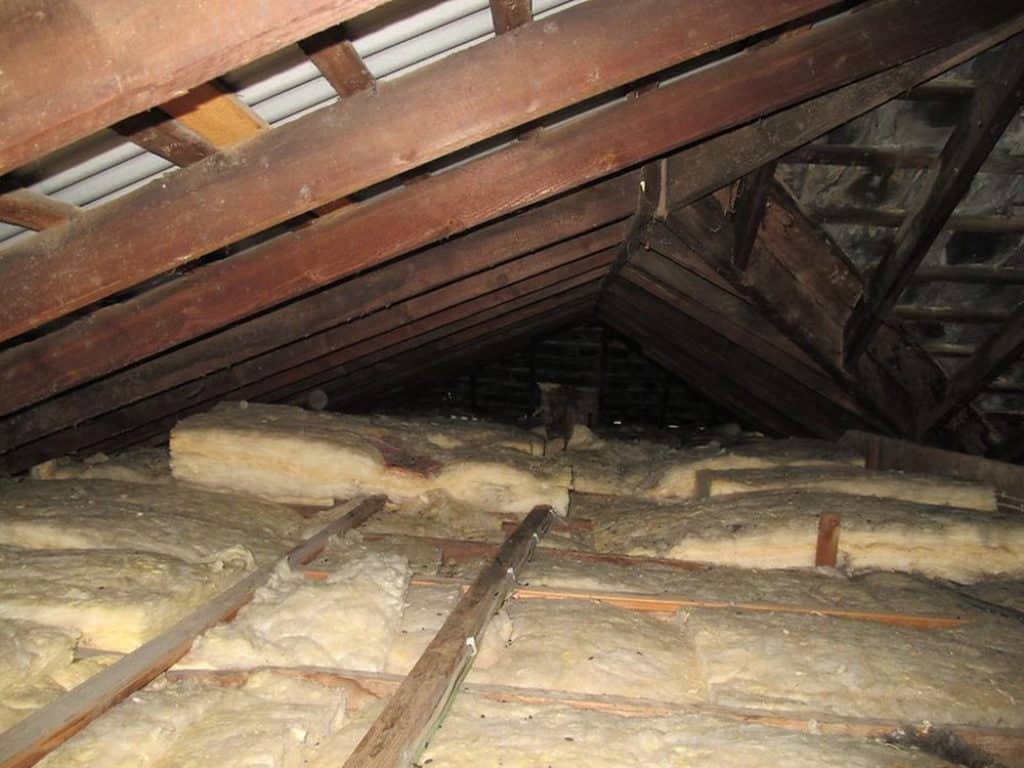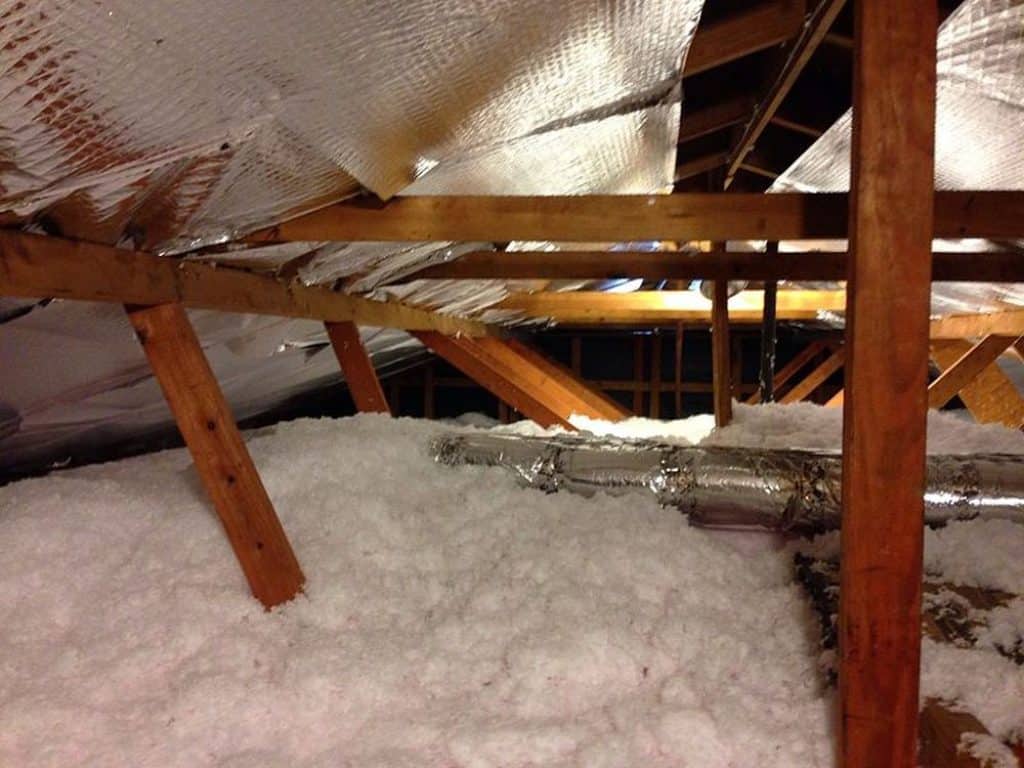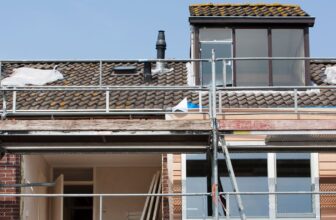How To Cover Exposed Insulation In Attic? (In-Depth Guide)
For most homes, proper attic insulation is the key to making them more energy efficient.
When done right, insulation at this part of the house can deliver a drastic difference in temperature and significantly cut down your heating and cooling bills.
Most homeowners, and especially contractors, are aware of this and pay particular attention when it comes to insulating the top-most part of the house.
The attic insulation starts with the selection of insulation type and material that should be suitable for the particular house and the climate conditions in the surrounding area.
However, after finishing the process of insulating the attic, homeowners face another dilemma.
Should they cover the insulation or leave it exposed?
And, if they chose the first option, how to cover exposed insulation in attic?
Below, I’ll explain how to do this and in what situations you should opt for covered attic insulation.
Table of Contents
How To Cover Exposed Insulation In Attic?

People use their space in the attic for various purposes. Some homeowners don’t use it at all or simply have it play the role of storage.
If your attic space is unoccupied, the exposed insulation poses no particular health risk.
Also, it still does a very good job of regulating insulating the house and keeping the outside elements at bay.
Still, be aware that if you use the attic as storage, you may occasionally brush against or bump into insulation material.
This may cause itching and mess up the insulation integrity. You may also plan to turn the attic into a space where you’ll spend more time.
For example, make it a playroom or gym. If this is the case, you should definitely cover the insulation.
The exposed installation will not only look unappealing but some materials may put anyone spending time in the attic at a serious health risk.
Step-by-Step Guide

If you are going to cover the exposed insulation in the attic, make sure you do it properly.
It’s important not to skip any steps and use the covering material that is suitable for the particular space and insulation type.
Below, you’ll find a simple guide on how to do it. If you have some handyman experience, you can easily do it on your own by investing some time and effort.
However, if you’re unsure of your own capabilities to finish the job, it’s best to ask for the help of a professional.
In any case, make sure to apply all safety measures. Some insulation materials pose a threat to your health, especially to the eyes, skin, and lungs.
So, wearing a long-sleeved shirt and long pants is recommended, as is the use of gloves, protective glasses, and a dust mask.
Step 1: Inspect The Current Attic Insulation
Before you start with the covering, you should carefully assess the current condition of the attic insulation.
First of all, take note of what material’s been used, as it will play a role in choosing the appropriate coverage.
Also, check for any leaks, cracks, holes, and similar damages to the insulation as well as potential mold development.
If you notice any of these issues, make sure that they’re dealt with before you begin work on covering the insulation.
Step 2: Take Measurements
Headroom in the attic is important, both for your personal comfort and because most building codes prescribe a minimum allowed headroom area.
If your covering of exposed insulation in the attic is too thick, you may not have enough headroom allowance left.
So, be sure to properly measure the attic in advance, noting the length of each insulated wall.
The last thing you want is to set up an insulation cover and then have to do it all over again because you don’t have enough room.
Step 3: Decide On The Type Of Insulation Cover
When covering the exposed attic insulation, you’ll have several different options available.
Some insulation materials, such as spray polyurethane foams, must always have a thermal or ignition barrier, per building codes.
One thing you should never do is cover the existing insulation with another insulation layer, even if it’s a different material.
Even though it may seem that this will provide a better insulating result, it will only cause vapor and moisture issues, change R-value and decrease energy efficiency, and, damage the existing insulation.
Depending on what you’re trying to achieve and the existing insulation material, you can conceal the exposed insulation with drywall, plywood, kraft paper, or house wrap material (Tyvek).
You should avoid plastic coverings as they act as a second vapor barrier and trap moisture inside, resulting in condensation and mold growth.
The goal is to have a permeable barrier that will allow vapor to pass through.
Step 4: Install The Cover For Exposed Insulation
If you’ve done preparation work properly, the cover installation process itself shouldn’t be much of a problem.
For house wrap or kraft paper cover, simply cut the sheet rolls according to the previously taken measurements.
Once you’ve prepared cover sheets, cover the installation completely, top to bottom, and use a nail gun to attach them to joists.
Make sure no insulation material is left uncovered.
If you opt to install plywood or drywall, use the nail gun to attach boards to both ends of the wall.
To make sure, there are no gaps, you may first cover the insulation material with house wrap or kraft paper.
In any case, remember that the vents should be left open, to keep the attic properly ventilated.
As plywood and drywall boards are rather rigid, be careful not to damage insulation material’s integrity while covering it.
Conclusion
Even if you don’t plan to use the attic of your house, you should still make sure that it’s properly insulated.
It will have a great effect on the overall insulation of your home and the general quality of life inside.
However, in these cases, covering the insulation in the attic isn’t an absolute necessity.
On the other hand, activating the attic and making it livable will absolutely require some sort of insulation covering.
As there are various cover options to choose from, you’ll need to do your research and learn which type is best suited for your needs.
The right choice of cover for the exposed insulation can mean the difference between a healthy, energy-efficient house and constant problems with mold and other common insulation issues.



















































































